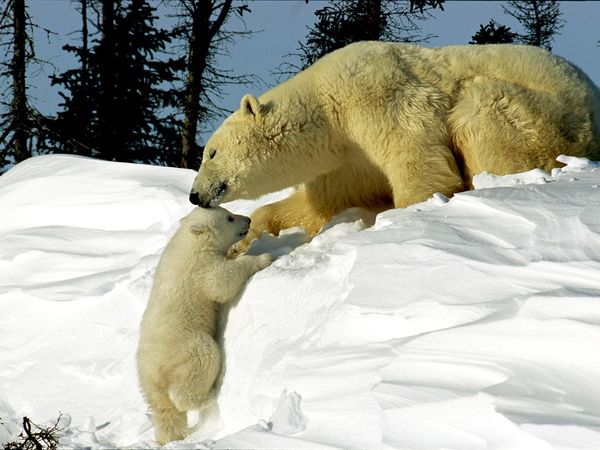
Annual temperatures are predicted to rise 3.6 degrees Fahrenheit (2 degrees Celsius) by mid-century in some climate models.Leaves that grow in hotter air contain more fiber and less digestible protein, meaning leaf-eaters would take longer to process their food.
In addition, the higher temperatures may force the animals to spend more time lounging in the shade to avoid overheating.
Such changes may force some gorilla and monkey species to sit still for long periods—time that would otherwise be used for finding food, protecting territory, or maintaining social bonds, the study says.
The inaction, combined with less nutritious food, could eventually cause mountain gorillas and African colobines—a large group of species including colobus monkeys—to go extinct, the study predicts.
(Related pictures: 25 Most Endangered Primates Named.)
"A two-degree temperature increase is not a very farfetched idea," said study leader Amanda Korstjens, a biological anthropologist at Bournemouth University in the U.K.
"Animals can adapt ... and maybe primates will find another way of coping," she added. But "I expect that they are at their limits already."
Flexible Fruit-Eaters
Korstjens and colleagues compared climate models with previously published data on primates' behavior, diets, and group sizes worldwide.
Based on the data, the team created global maps that show where primates exist now and where climate change is predicted to cause die-offs.
The data revealed that the expected higher temperatures shouldn't affect most South American primates, which eat highly digestible fruit. Also, South American primate habitats are less fragmented by agriculture and encroaching deserts than most primate habitats in Africa, Korstjens said.
Around the world, fruit-eaters—such as baboons and vervet monkeys in Africa—would also be better off. They occupy a wider range of habitat than leaf-eaters, which are confined to a narrow belt near the Equator, according to the study, published December 8 in the journal Animal Behaviour.
"Not as Stable As You Think"
The theatened primates could possibly adapt to the global warming-induced changes by changing their diets, but no one knows for sure.
Colobines could eat some fruit, but their highly leaf adapted stomachs aren't equipped for all-fruit diets, Korstjens said.
Such assumptions of inadaptability may be weak points in the new study, said Colin Chapman, a primate ecologist at Montreal's McGill University, who was not involved in the study.
"It's not clear how flexible [colobines] could be."
But "if the assumptions are correct," Chapman said, "shows a pretty big potential in changes in distribution and extinction risk."
Mountain gorillas are in a particularly serious bind, he added. They have little access to fresh fruit in their high-altitude habitats, and they're "sitting on top of mountains with nowhere else to go."
A hotter Africa would also pose a threat for conservation efforts, Chapman said.
Well-managed national parks may be able to keep out poachers and loggers, for example, but they can't protect against temperature changes, he said.
From;



No comments:
Post a Comment